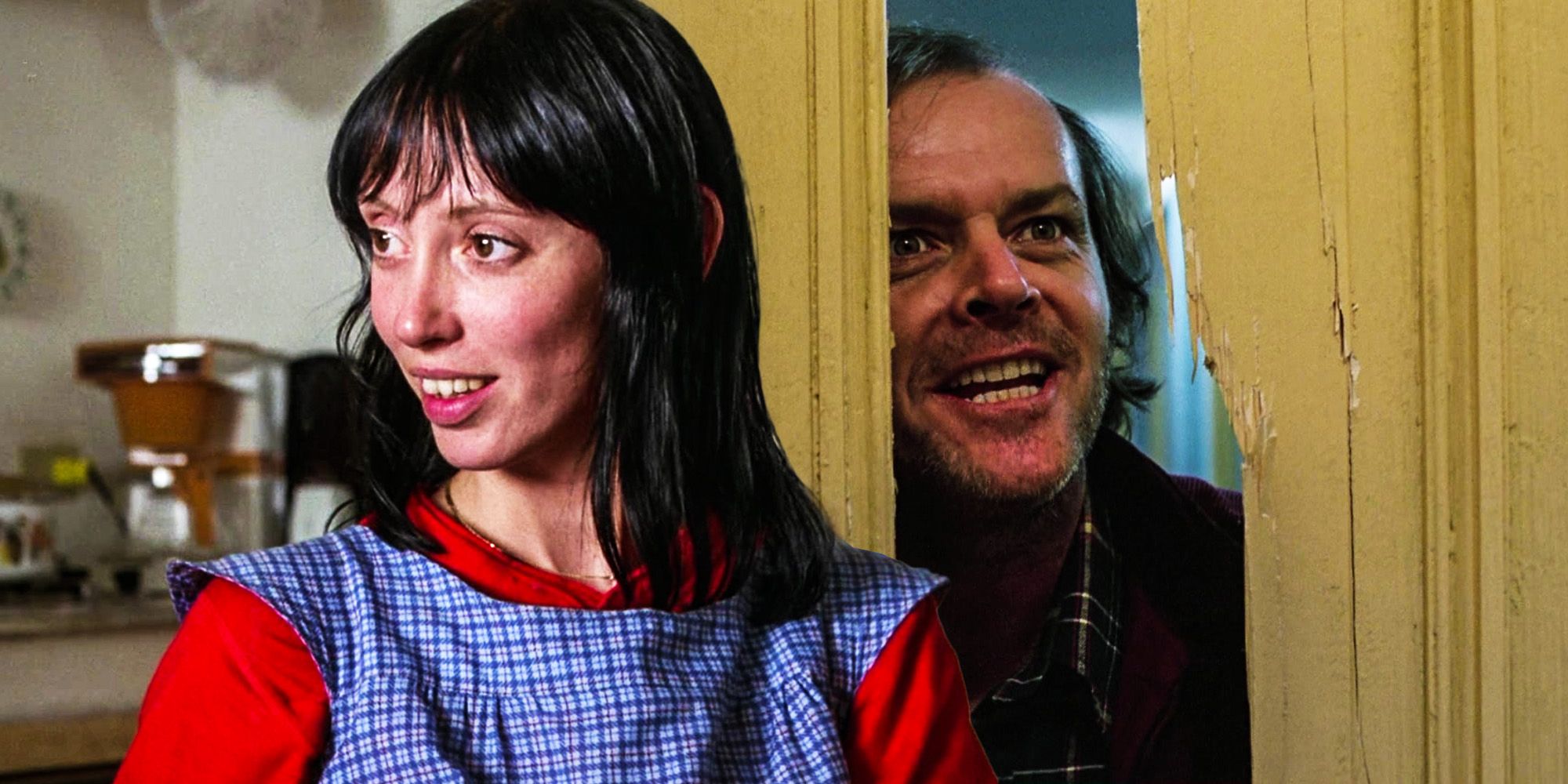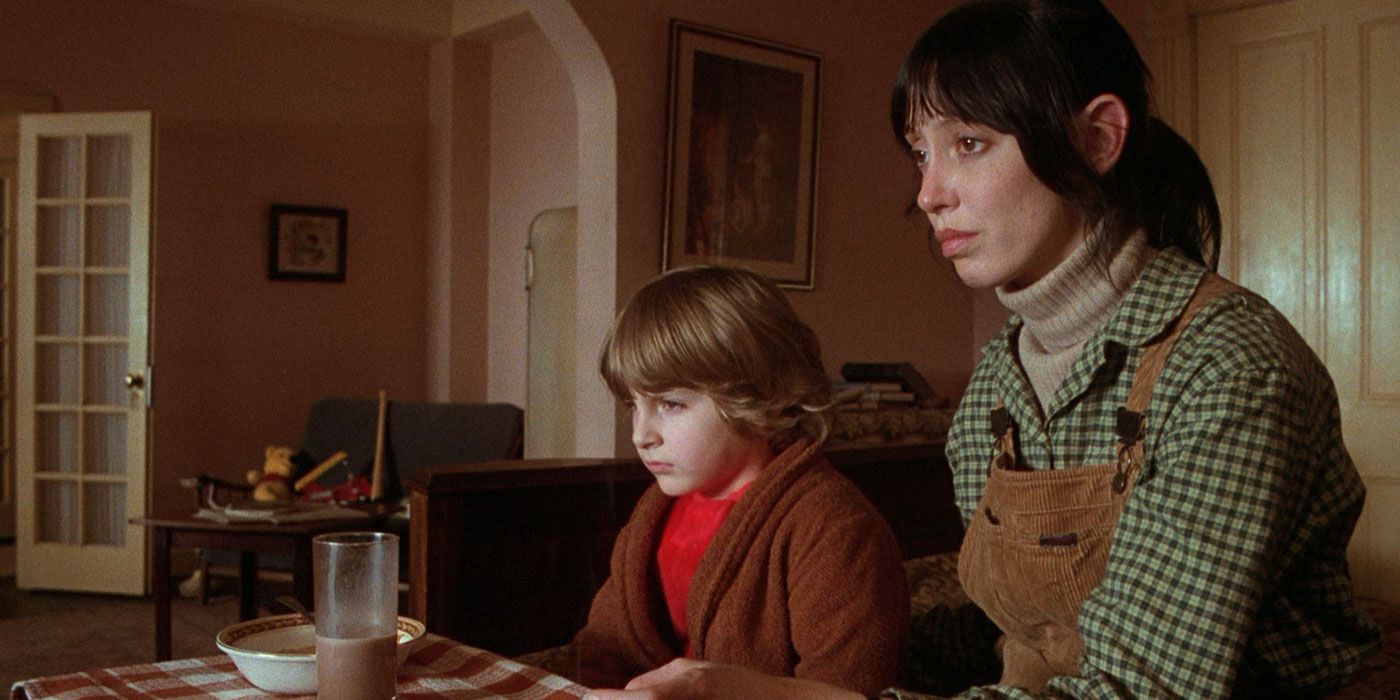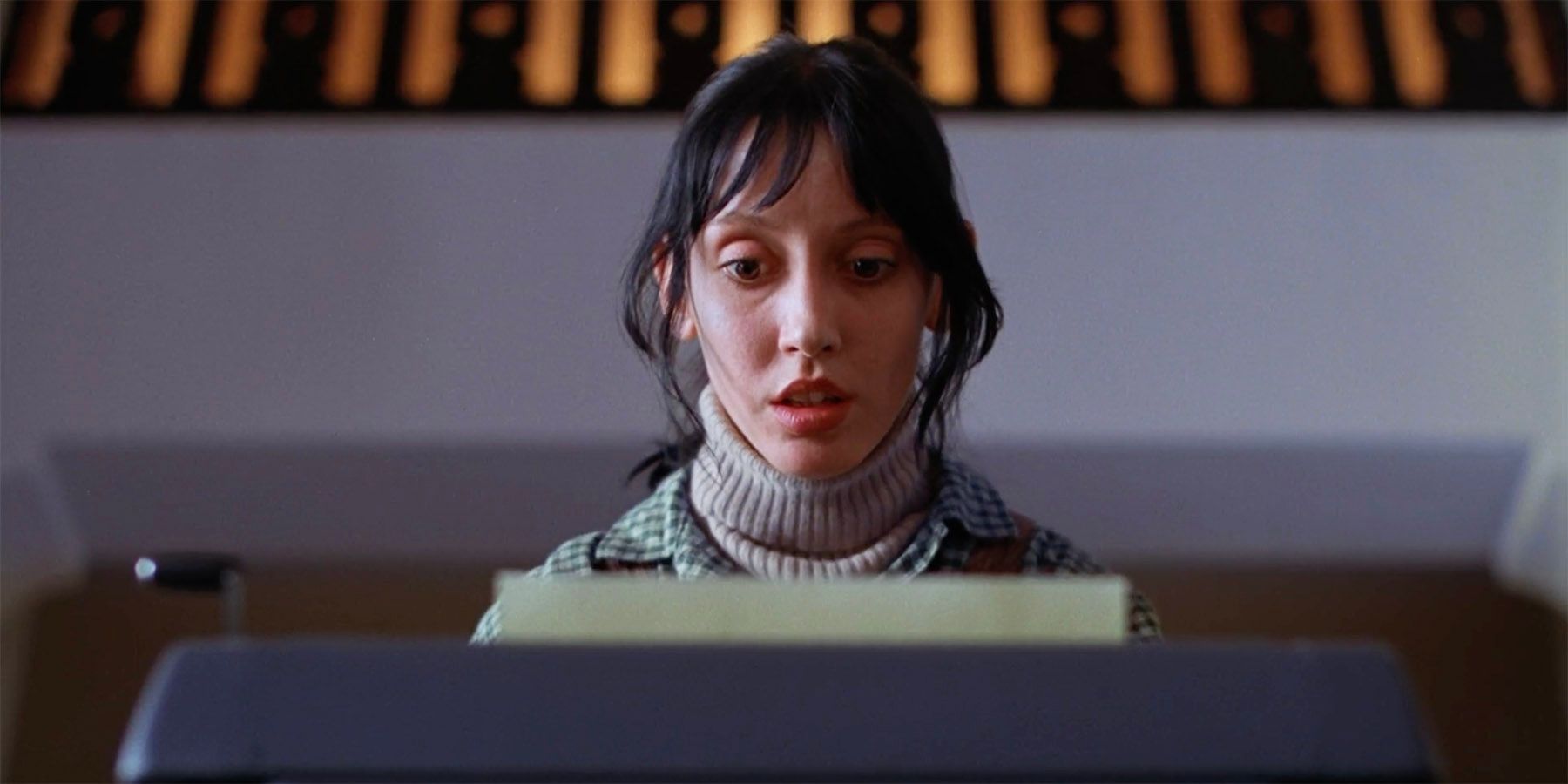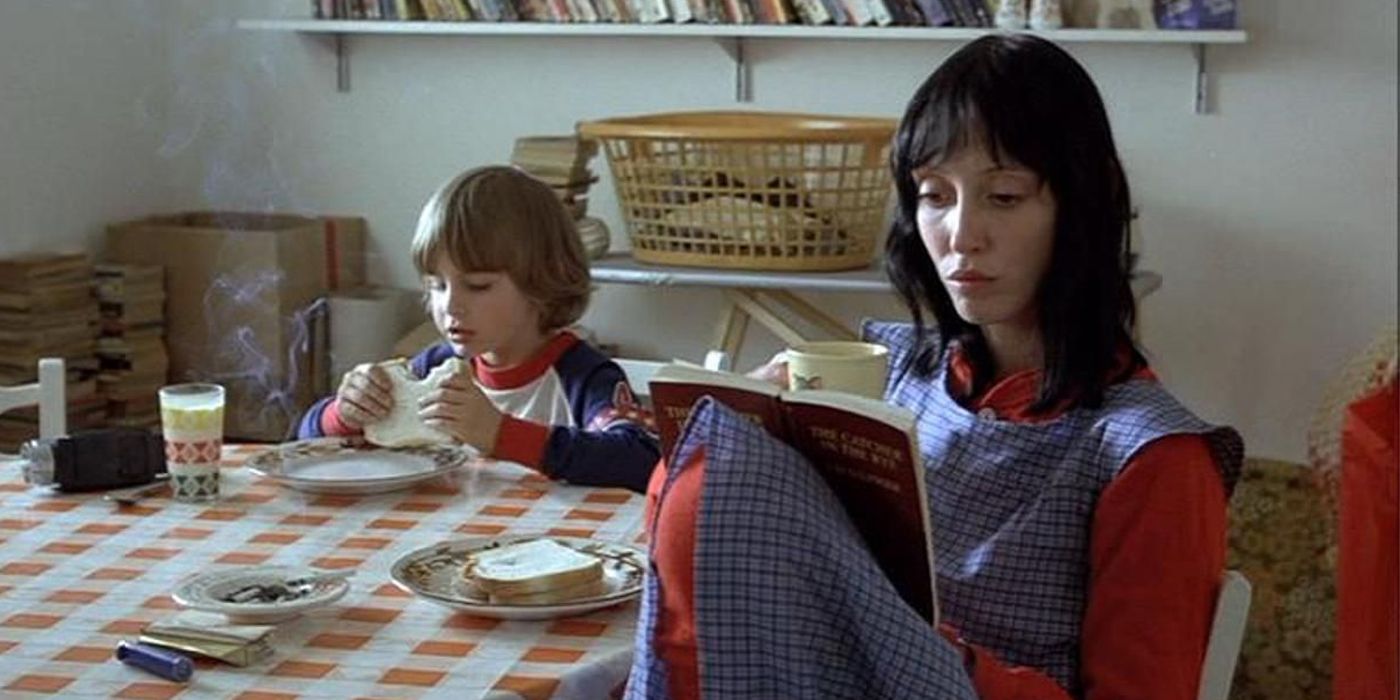The Shining has made way for a variety of theories on its real meaning, the messages Stanley Kubrick supposedly hid in it, its metaphors, and more, and there’s one that suggests that most of the events that take place at the Overlook Hotel are in Wendy Torrance’s head. Many of Stephen King’s novels and short stories have been adapted to other media for decades, and one of the best but also controversial ones is Stanley Kubrick’s version of King’s 1977 novel The Shining.
The Shining follows Jack Torrance (Jack Nicholson), a struggling writer and recovering alcoholic who takes a position as the off-season caretaker of the Overlook Hotel in the Colorado Rockies. As his relationship with his family is fractured, Jack takes his wife, Wendy (Shelley Duvall), and their son, Danny (Danny Lloyd), with him, in hopes to rebuild their relationship and reconnect. Jack also hopes to find the motivation he needs to work on a play, but when a snowstorm leaves them cut off from the outside world, and along with Danny’s mysterious psychic abilities, the supernatural forces inhabiting the Overlook Hotel awaken and start to mess with Jack’s sanity.
Kubrick made a lot of changes to King’s novel, to the point where they have little in common and King himself has expressed his dislike towards it over the years. Still, The Shining continues to be considered one of the greatest horror movies ever (and one of the best movies of all time), and its popularity with the audience keeps growing as more interpretations and theories about the story and characters emerge. One interesting but dark theory suggests that the events of The Shining are a product of Wendy’s mind, and there are a couple of details throughout the movie that could support the idea, to an extent.
How Kubrick’s The Shining Changed Wendy Torrance
As mentioned above, Kubrick made so many changes to The Shining when adapting it to the big screen that the only things they share are the basic idea and the characters’ names, as he also changed the main characters’ personalities, backstories, and dynamics. A lot is said about the changes he made to Jack Torrance, who instead of being used as a conduit to get to Danny by the hotel was made into an already unstable and disturbed man who only needed a little push to fall into madness, but another character who went through changes that hurt their story is Wendy.
In Kubrick’s The Shining, Wendy is portrayed as submissive, nervous, gentle, and passive, and always looks like she’s on the verge of a breakdown, especially when around Jack. In the novel, however, Wendy is completely different, as she’s much more independent, self-reliant, and even stands up to Jack, something that the film version tried and failed to do. Kubrick’s Wendy was weak, fragile, and was scared most of the time, and her submissiveness was one of King’s main reasons to dislike Kubrick’s movie.
Theory: The Shining's Events Are All In Wendy’s Head
These major changes to Wendy Torrance, along with The Shining’s continuity “errors” and other details, have made way for a theory that suggests Jack wasn’t the only mentally unstable member of the Torrance family. The theory, created by Rob Navarro on YouTube, explains that most of the events in The Shining actually happen in Wendy’s head as she goes into psychotic episodes. The scene that, to the author of the theory, makes it clear that it’s all happening in Wendy’s head, is the one in the “Tuesday” segment, where Wendy enters the Colorado Room and finds Jack working on his novel. As Wendy approaches Jack, he rips the paper out of the typewriter, and the chair and table behind Jack appear and disappear between shots. However, the moment that “unlocks the Wendy theory” is when she leaves, as Jack now looks calm and even confused, hir hair isn’t out of place, and there’s paper in the typewriter, meaning he never pulled it out. This, then, could suggest that this exchange between Wendy and Jack only happened in her head, and she might have said her lines out loud and imagined Jack's, said both out loud or had it all play out in her head, and she just walked to Jack, stared at him, and then left.
Wendy is implied to have an active imagination, as she’s seen reading throughout The Shining and Jack mentions that she’s a fan of horror stories, and this, along with traumatic experiences and her already fragile mental state, could have deeply messed with her perception of the world around her. Navarro goes on to explain that a key detail to knowing when something is taking place in Wendy’s mind is the camera placement, and they use the same scene in the Colorado Room as an example. In it, the camera is filming from the back of the characters and slowly comes closer as Wendy approaches Jack, which could be seen as Wendy witnessing her hallucination. Another example of this is the scene where Wendy and Danny are watching TV at the hotel, but the TV isn’t plugged in, so what the audience is seeing on it is Wendy’s projection of it – and the camera in this scene is also filming from the back of the characters, zooming out to show that Wendy and Danny are alone.
Another way of knowing when a scene is happening in Wendy’s head is the supposed “continuity errors”. The Shining is plagued with continuity errors, which seems strange as Kubrick is known to have been an extreme perfectionist and would have never allowed so many mistakes. These were actually done on purpose in order to mess with the audience and give the idea that the hotel is an entity on its own, and if the “Wendy theory” is true, these were also made to show when she’s going through a psychotic episode. The scenes with continuity errors like disappearing chairs, colors that change between shots and patterns that are suddenly flipped are the ones that happen in Wendy’s mind, as she doesn’t remember clearly the details of a scene or simply doesn’t pay attention to them. The “Wendy theory” also gives a solution to the mystery of Grady’s first name changing throughout the movie, as it explains that Jack told her the story of Grady and the murder of the twins in order to convince her to go to the hotel (because she’s a fan of horror stories), but only told her his last name, so her mind filled in the blanks. The appearances of Grady and the twins, then, are also hallucinations of Wendy, and they are her interpretation of the events as told to her by Jack.
The Problems With The Shining Happening In Wendy’s Head
While the “Wendy theory” is intriguing and invites the audience to take a much closer look at The Shining and details like continuity errors and camera placement, the theory does more harm than good to not only Wendy but the rest of the characters and the story. The biggest change the “Wendy theory” makes to The Shining is about Danny’s powers, as these are also a hallucination, meaning Danny doesn’t have “The Shine” nor does Dick Hallorann (Scatman Crothers), as those scenes where Danny and Hallorann communicated telepathically and talked about “The Shine” were also a product of her imagination. With no such thing as “The Shine”, The Shining takes a completely different meaning as it’s no longer about a kid whose special power awakens the evil forces at a haunted hotel but it’s all about a scared, submissive, and mentally ill mother who goes into psychotic episodes where she hallucinates the absolute worse scenarios. The “Wendy Theory” completely changes The Shining, and while it’s an interesting exercise to watch the movie under this meticulous lens, in the end, it’s up to every viewer to decide if this could have been one of Stanley Kubrick’s secret messages in The Shining or if it’s just a different interpretation of the story.




